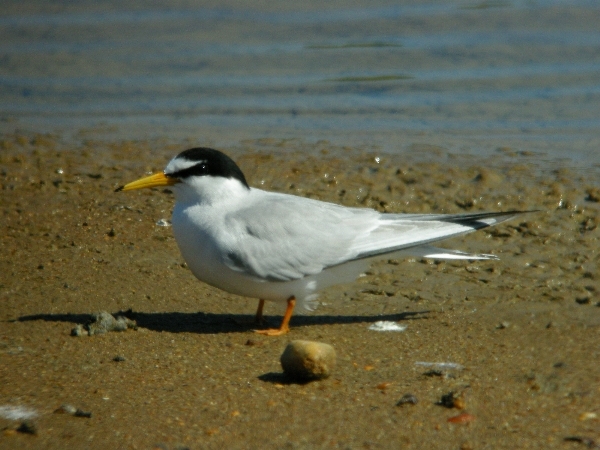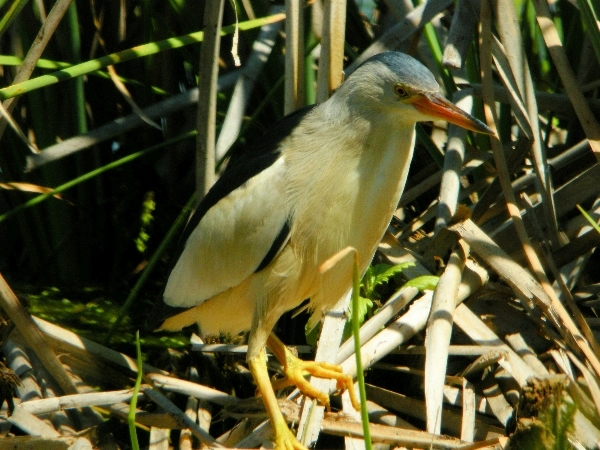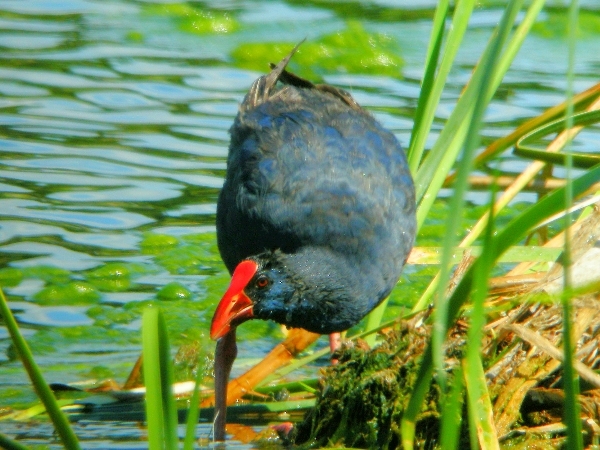
WESTERN RIA FORMOSO AT QUINTO DO LAGO – LUGO FARM – RIA GILAO VALLEY
WEATHER: all day sunshine, a nice breeze most of the day. Top temp 32C
Instead of going out before breakfast we ate at 7am and we were on the road just after 8. The local Little Owl has now reached celebrity status and posed nicely for our cameras as we left the salt pans on our way to the marshes around Faro Airport.
We arrived at our venue just before 9am we parked very near to the end of the runway at Faro Airport and set off on our walk. As it was a Sunday with beautiful weather we were joined on our walk by dozens of other people, there were walkers, joggers, runners and many cyclists all of which were dressed in the latest gym-gear and none of which noticed the tremendous wildlife all around them!

The tidal mudflats at Quinto do Lago
The first part of the walk was long and arduous with little reward, it was low tide and the huge expanse of exposed mud and brackish channels on our left held few birds. Out on this muddy environment and during the first hour we saw Eurasian Spoonbill, Little Egret, White Stork, Eurasian Curlew, Whimbrel, Bar-tailed Godwits, Ruddy Turnstone, Kentish Plover and a superb looking Audouin’s Gull.

Little Tern
The flooded salt pans and larger brackish lagoons on our right we devoid of birds until we were about a kilometer from the buses when we found 15 Eurasian Spoonbills and a couple of dozen ducks most of which were Pochards, both Red-crested and Common Pochard were present. Good numbers of Gadwall, Mallard, Black-winged Stilts and a few Little & Great-crested Grebes were seen there too. One nice surprise was the finding of a Water Rail, it was working its way along a channel giving us excellent but intermittent views.
As we approached the beach the footpath turned back inland and led us alongside a golf course where several Eurasian Hoopoes were seen and many Iberian Magpies were flitting about. A large pool with a raised hide provided some excellent birding over the next hour. First we found several Western Swamphens feeding on the short turf of the golf course then a pair of ‘introduced’ Black-headed Weaver appeared and following that we spent a good half-an-hour tracking down a couple of Little Bitterns.

The Golf Course Pond at Quinto do Lago
The pool was brimming with bird life, lots of duck species had chicks, grebes were carrying chicks on their backs and we found even more Little Bitterns and Western Swamphens. The birds on this pool were obviously accustomed to human presence and gave excellent close views, the group were thrilled by this fantastic birding experience. We had prolonged excellent close views of Little Bittern and Black-headed Weaver as well as many other species it was really hard to drag the group away!

Little Bittern

We continued the walk along the side of the golf course watching several Eurasian Hoopoes, lots of Iberian Magpies and we heard a Wryneck calling across the fairway from us. We thought we couldn’t top the wonderful birding experience we had just enjoyed at the pond but when the Wryneck flew into a tree not far from us and showed extremely well we changed our minds. For an unforgettable 5 minutes the Wryneck remained in view moving a couple times but always showing well, fantastic!

Western Swamphen

From there we walked back onto the salt-pans and sat in the shade of some mature eucalyptus trees to eat our picnic lunch. Four of us walked back to road to collect the buses. In the meantime, one of the group had gone AWOL! So, I made a quick search back at the golf course, finding Mistle Thrush, Serin and Eurasian Hoopoe in the process but not missing Bob. He turned up back at the road where we had originally left the buses, hot and stressed he had walked all the way back and wasn’t happy to find the the group and the buses missing!

The enigmatic Wryneck gave us quite a show
After that we drove back to the hotel and took an hour or so off for relaxation in the heat of the afternoon. At 4:30pm we drove north of Tavira into the Ria Gilao Valley where interesting scrubland looked good habitat for a number of warblers. After an hour or so we realised that was not the case, either it was too late in the day or there were no birds present. We did have one lucky surprise when one of the group ‘kicked-up’ a Red-necked Nightjar, the bird flew around us before settling into some nearby scrub, how cool was that!

Mistle Thrush
We finished at 6pm and drove back to the hotel to enjoy another excellent dinner, unfortunately it was our last one as we are departing for home tomorrow.
